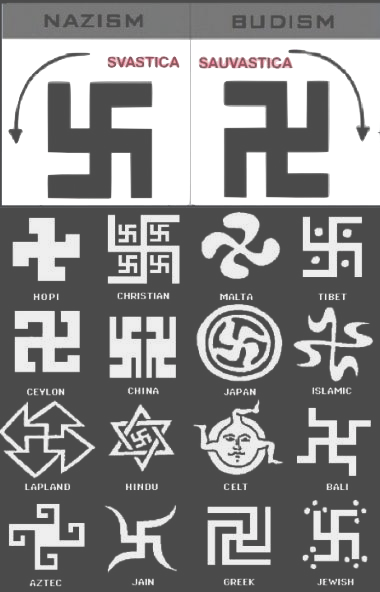|
Swastika

The Swastika symbol - History of the symbol: Indians associate the swastika with good luck and protection from wrath. They mark it on doors, walls, shrines, and their own bodies. It can represent the sun, the god Vishnu, or the 'world-wheel.' The swastika is commonly used on Japanese maps to indicate the location of a buddhist temple. It was also widespread among Native American peoples, and appeared in ancient Oriental, Egyptian, and Irish cultures. In the late nineteenth century, the swastika symbolized a movement celebrating Germanic culture, heritage, and nationalism. By 1912, this movement began to take on anti-Semitic undertones. Later, Adolph Hitler chose the swastika to be the symbol of the Nazi Party. The Nazi swastika was a clockwise pointing swastika, whereas most Buddhist versions are counterclockwise.
- In a fit of political correctness, Microsoft removed the Swastika symbols from its Bookshelf Symbol 7 font in December 2003.
- Insightful discussion (and indignation) on Typographica after the Microsoft flap.
- Kagijuuji: a font made in 2004 by yours truly with nothing but swastika symbols.
|
EXTERNAL LINKS
MyFonts search
Monotype search
Fontspring search
Google search
INTERNAL LINKS
Typography ⦿
Dingbats (original) ⦿
German type scene ⦿
|

